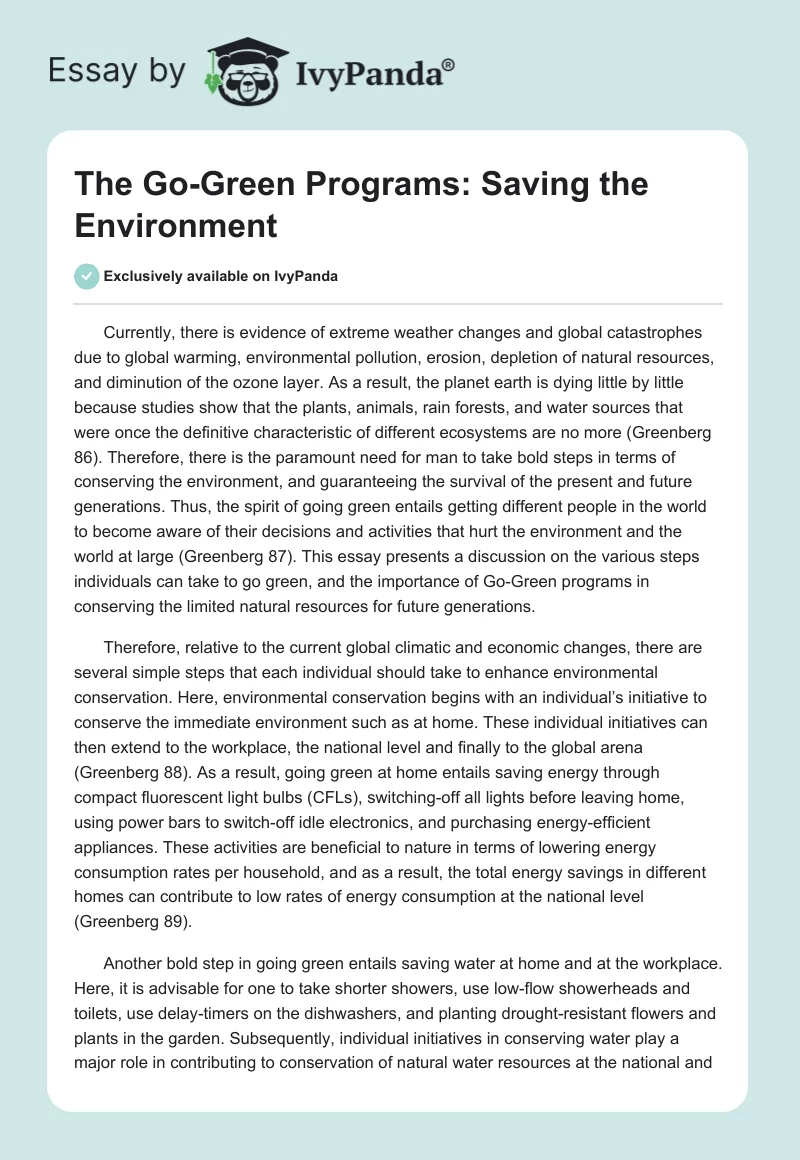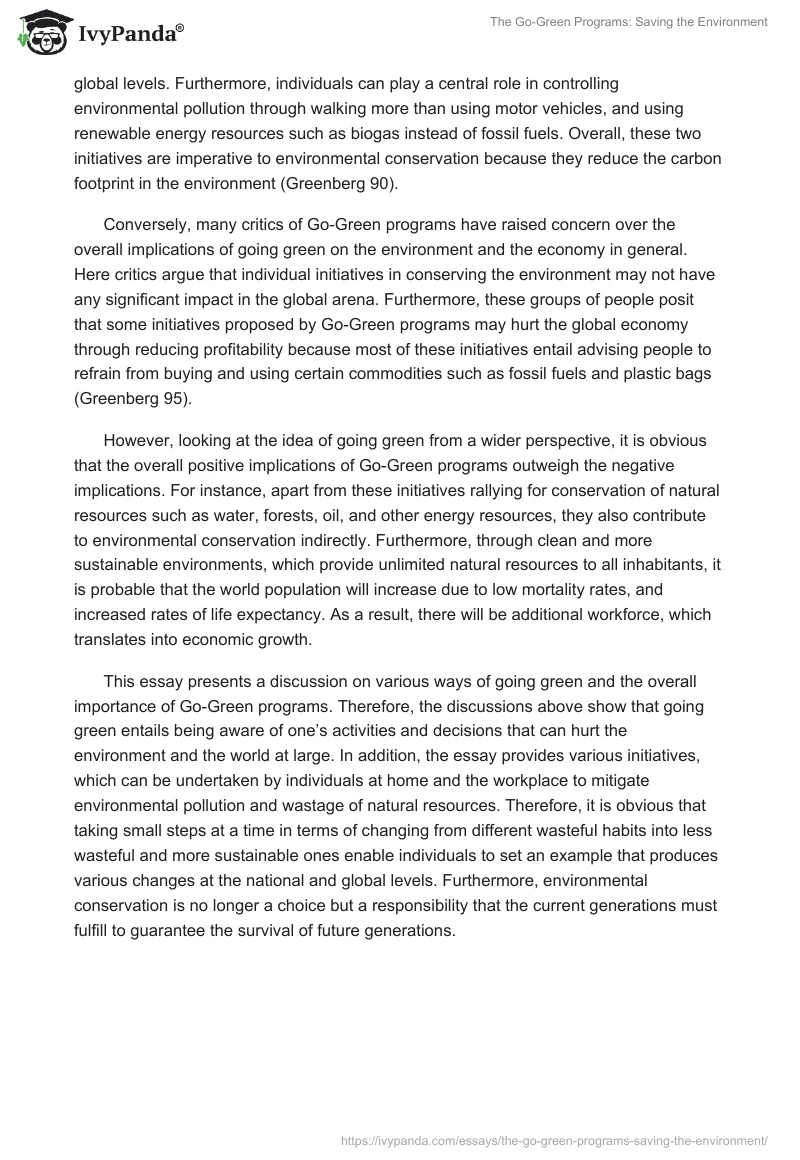Currently, there is evidence of extreme weather changes and global catastrophes due to global warming, environmental pollution, erosion, depletion of natural resources, and diminution of the ozone layer. As a result, the planet earth is dying little by little because studies show that the plants, animals, rain forests, and water sources that were once the definitive characteristic of different ecosystems are no more (Greenberg 86). Therefore, there is the paramount need for man to take bold steps in terms of conserving the environment, and guaranteeing the survival of the present and future generations. Thus, the spirit of going green entails getting different people in the world to become aware of their decisions and activities that hurt the environment and the world at large (Greenberg 87). This essay presents a discussion on the various steps individuals can take to go green, and the importance of Go-Green programs in conserving the limited natural resources for future generations.
Therefore, relative to the current global climatic and economic changes, there are several simple steps that each individual should take to enhance environmental conservation. Here, environmental conservation begins with an individual’s initiative to conserve the immediate environment such as at home. These individual initiatives can then extend to the workplace, the national level and finally to the global arena (Greenberg 88). As a result, going green at home entails saving energy through compact fluorescent light bulbs (CFLs), switching-off all lights before leaving home, using power bars to switch-off idle electronics, and purchasing energy-efficient appliances. These activities are beneficial to nature in terms of lowering energy consumption rates per household, and as a result, the total energy savings in different homes can contribute to low rates of energy consumption at the national level (Greenberg 89).
Another bold step in going green entails saving water at home and at the workplace. Here, it is advisable for one to take shorter showers, use low-flow showerheads and toilets, use delay-timers on the dishwashers, and planting drought-resistant flowers and plants in the garden. Subsequently, individual initiatives in conserving water play a major role in contributing to conservation of natural water resources at the national and global levels. Furthermore, individuals can play a central role in controlling environmental pollution through walking more than using motor vehicles, and using renewable energy resources such as biogas instead of fossil fuels. Overall, these two initiatives are imperative to environmental conservation because they reduce the carbon footprint in the environment (Greenberg 90).
Conversely, many critics of Go-Green programs have raised concern over the overall implications of going green on the environment and the economy in general. Here critics argue that individual initiatives in conserving the environment may not have any significant impact in the global arena. Furthermore, these groups of people posit that some initiatives proposed by Go-Green programs may hurt the global economy through reducing profitability because most of these initiatives entail advising people to refrain from buying and using certain commodities such as fossil fuels and plastic bags (Greenberg 95).
However, looking at the idea of going green from a wider perspective, it is obvious that the overall positive implications of Go-Green programs outweigh the negative implications. For instance, apart from these initiatives rallying for conservation of natural resources such as water, forests, oil, and other energy resources, they also contribute to environmental conservation indirectly. Furthermore, through clean and more sustainable environments, which provide unlimited natural resources to all inhabitants, it is probable that the world population will increase due to low mortality rates, and increased rates of life expectancy. As a result, there will be additional workforce, which translates into economic growth.
This essay presents a discussion on various ways of going green and the overall importance of Go-Green programs. Therefore, the discussions above show that going green entails being aware of one’s activities and decisions that can hurt the environment and the world at large. In addition, the essay provides various initiatives, which can be undertaken by individuals at home and the workplace to mitigate environmental pollution and wastage of natural resources. Therefore, it is obvious that taking small steps at a time in terms of changing from different wasteful habits into less wasteful and more sustainable ones enable individuals to set an example that produces various changes at the national and global levels. Furthermore, environmental conservation is no longer a choice but a responsibility that the current generations must fulfill to guarantee the survival of future generations.
Reference
Greenberg, Nadivah. “Shop right: American conservatisms, consumption, and the environment.” Global Environmental Politics, MIT Press Journals 6.2 (2006): 85-111. Print.


